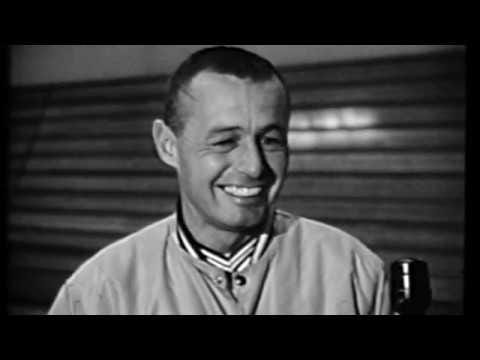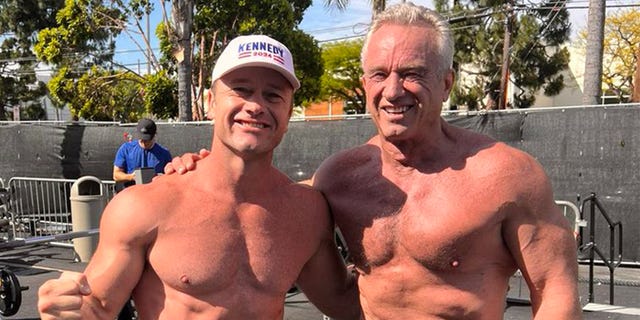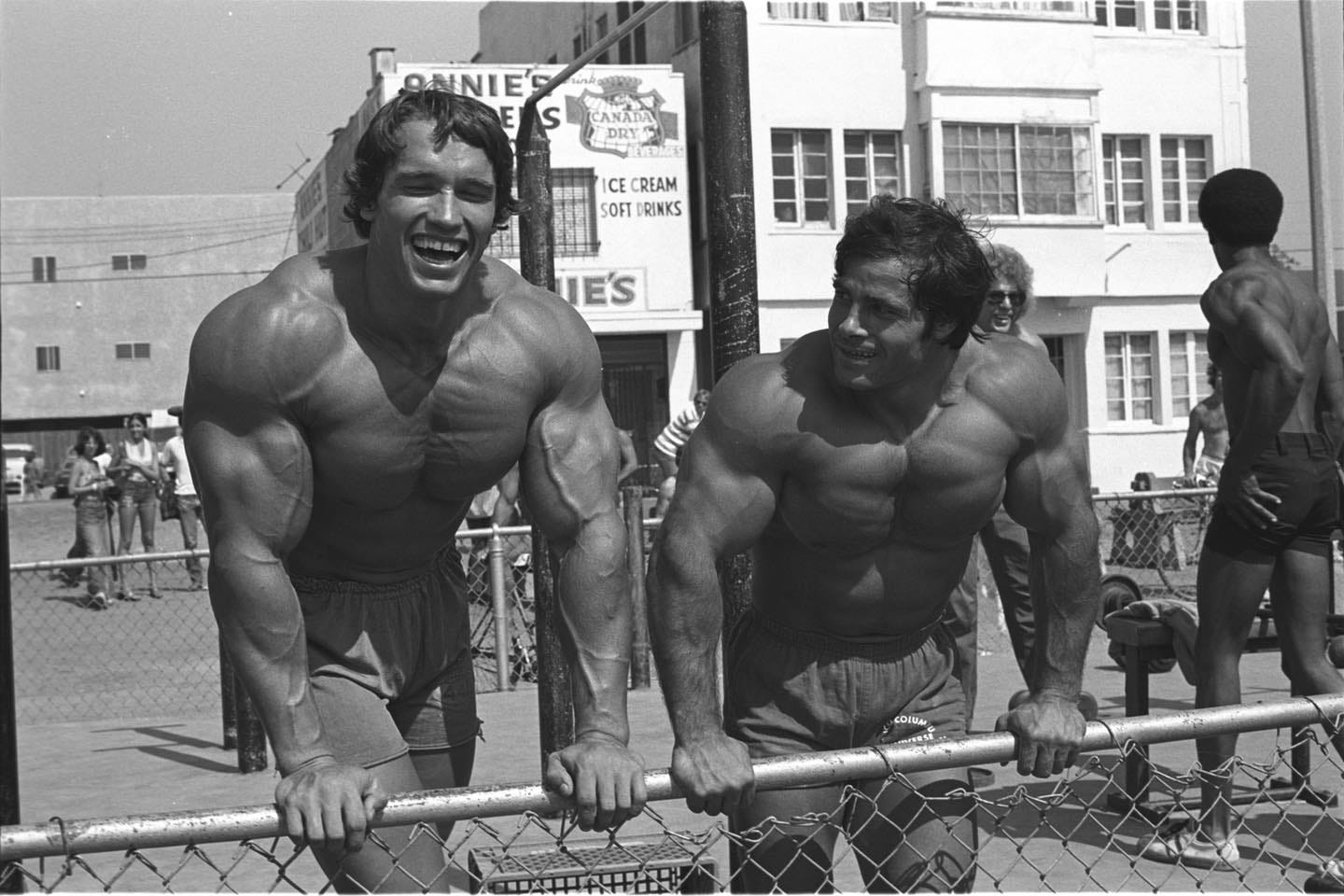[This essay is the first in a proposed series exploring the nexus of rightist thought and the education of young people at the secondary level.]
The headlines proclaim it, and every right-wing coded media figure agrees- the kids are fat, sedentary, and addicted to screens. No one exercises anymore, and we are losing the manly strength that won our country from the wilderness and defeated hostile forces at home and abroad. An insidious leftist ideology is partially to blame, teaching the youth that fitness is fascist, but so too is rampant materialism and the ease of modern life, so intoxicating in the warm bath of dopamine it offers to those who surrender to idleness. Something must be done.
The year is 1960.
Apropos, Robert F. Kennedy Jr., the last remaining political throwback to that era, recently went viral for a video of a shirtless outdoor lifting session. This occasioned a lot of commentary, most centered around Kennedy being completely jacked (though some haters criticized the amount of weight he was putting up, not taking into account that it was a drop set and that Kennedy is almost 70). But perhaps the most jarring thing was the spectacle of an avowed progressive being in shape, as this is atypical, given the leftist proclivity for fetishizing weakness and victimhood. But while RFK Jr. is a progressive, he is also a Kennedy, and that fact is significant, because it points to an overlooked part of the Kennedy legacy- the role that his uncle, John F. Kennedy, playing in creating the last great wave of enthusiasm for physical education, and what that means for the future.
“Ask not what T-ah-T can do for you, but what you can do on T-ah-T".”
By 1960, the generation that had won WWII, including Kennedy, was approaching or entering middle age and the boomers were then in early youth. America bestrode the world like a colossus, factories were churning out products, universities were churning out graduates, and couples were churning out babies. Nevertheless, there was a sense of palpable unease behind it all, a fear that having won the greatest conflict in history, America would sink into decadence. The recent conflict in Korea had pitted Americans against men of the third world conditioned by harder lives of labor and deprivation, and the results were decidedly and uncomfortably mixed.
Taking office in 1960 as the youngest man ever elected president,* John F. Kennedy sought to project a public image of youth, vigor (a word he loved), and physicality. He sailed, played football, and otherwise pursued a strenuous life at every opportunity. Much was made of his heroism in war, rescuing comrades from his sinking ship by swimming with them for miles before being in turn picked up from a desert island. Privately, Kennedy had suffered from poor health all his life, had been given last rites four times as a youth, and knew he would never grow old. This knowledge made him commit to living life to the fullest, which included an astonishing amount of personal recklessness that could have cost him his career and family. For better or worse, he let nothing hold him back, and he wanted the same for his country.
This was the rationale for his 1960 article “The Soft American.” The piece appeared in Sports Illustrated, the magazine then being considered a venue for serious journalism and the subject worthy of the attention of the president. It is worth reading in full. For perhaps the last time, the leader of the US was able to connect athletics with national and individual purpose and meaning, contextualizing America’s current problems related to its urgent lack of fitness. Kennedy drew on the Ancient Greeks (his brother RFK would one day prevent a potential riot by quoting Aeschylus) and the full sweep of Western history to make his point, that physical fitness was fundamental to the mental and spiritual health of the nation as much as it was each man and woman. This passage sums it up:
For physical fitness is not only one of the most important keys to a healthy body; it is the basis of dynamic and creative intellectual activity. The relationship between the soundness of the body and the activities of the mind is subtle and complex. Much is not yet understood. But we do know what the Greeks knew: that intelligence and skill can only function at the peak of their capacity when the body is healthy and strong; that hardy spirits and tough minds usually inhabit sound bodies. In this sense, physical fitness is the basis of all the activities of our society. And if our bodies grow soft and inactive, if we fail to encourage physical development and prowess, we will undermine our capacity for thought, for work and for the use of those skills vital to an expanding and complex America.
See also the above.
In pursuit of this goal, Kennedy, Cold War liberal that he was, set up a government agency to scour the country looking for innovative models from which to create national examples. This group, the President’s Council on Physical Fitness, emerged from an older organization called the President’s Council on Youth Fitness; the name change is significant, as Kennedy envisioned a central government hub for disseminating information and encouraging fitness for Americans of all ages. Still, the first place to look for innovation was naturally the place where physical education was most commonly practiced, high schools, and it didn’t take long for the Council to find one that had everything they were looking for, including a coach with some revolutionary ideas.
Stan LaProtti was a WWII vet like many of his generation. And like many of his peers, he felt that the youth were getting soft, and also like many of them, he sought to make a difference as a physical education teacher. The modern reader, accustomed to a feminized and safety-centric version of PE (assuming it exists) taught by the bottom of the educational barrel, should know that in the semi-recent past public education was an attractive career prospect for bright and talented men who brought to their work an unapologetic masculinity, especially in PE. LaProtti was such a man, not only a teacher, but a real theorist and philosopher, and he got his chance to put his ideas into practice as head of the physical education department at La Sierra High School in Carmichael, California.
LaProtti explains his goals at 1:14.
For the confused modern reader, please know that at one time, California was not the American capital of fail, fentanyl, and feces. For a shining moment after the Second World War, the Golden State was the epicenter of all the promise of the nation, a paradise of opportunity and excellence, glamor, wealth, fame, and beauty. Yes, there was a dark side, and yes, not all the stories were happy ones, but this was the home of Hollywood, Sasquatch, the best public university system on Earth, Ascended Masters living in Mount Shasta, cheap housing for middle class defense industry employees, and Muscle Beach. This last especially was a gift California gave to the world, as magazines featuring tanned blond bodybuilders benching in the sunshine inspired young men around the world to flock to the state in search of GAINZ.
Pictured above- Two immigrant bricklayers
In many ways American fitness culture was a native product of California, perhaps for the same reason as it was for the Greeks; the climate and wealth gave scope for leisure and an aesthetic appreciation for the body and its potential. As a native Floridian, I hold out hope that the Sunshine State may too launch a physical Renaissance for these reasons, but I digress. LaProtti himself was no jacked-up muscle man, but he understood the value of training the body just as Kennedy and his ancient forebears did, and what it could do for the young men under his tutelage. Thus, in 1957, after years of study and practice, he created the La Sierra System, the approach that caught the eye of the President’s Council.
The system is outlined in the La Sierra Concepts and Philosophy Handbook and a later version called The Motivation Factor. It is on the surface very simple, or at least requires little outlay in terms of equipment, being largely centered on calisthenics with the inclusion of shuttle runs, distance runs, and weighted carries. Nearly all of the exercises listed in the system could be done at home with only a few requiring any training partners. The movements are not complicated, by necessity being easy to teach for assistants and easy to grasp for kids.
The real innovation is in the way LaProtti taps into the male mind in the application of the system. While girls did participate and had their own version (and one girl actually did achieve the highest possible rank) it is clear that LaProtti understood boys and their unique drives and ambitions. The program was first of all for every student. This was not tailored to athletes, but rather part of the normal education of everyone at La Sierra. However, LaProtti was adamant that everyone be ranked by their level of fitness, this rank being indicated by colored gym shorts, the only article of clothing worn during exercise. Ranks were grouped together and given instruction appropriate for their respective levels. The freshmen all started at white, whereupon they were given the chance to hit benchmarks that would move them to red, then blue. Those who hit the median at blue became purples, those who hit the ceiling became golds, initially the highest level. However, a year into the program, LaProtti introduced the navy blue level, the earning of which was god-tier. Seriously, look at this list of requirements and understand that 21 kids (including one girl in the female version) achieved this:
§ Pull-Ups: 34
§ Bar-Dips: 52
§ Handstand Push-Ups: 50
§ Alt. 1 Arm Burpees (30 sec.): 26
§ 300-Yard Shuttle Run: 47.5 seconds
§ Rope Climb (20’, Hands Only, Sitting Start): 2 trips
§ Agility Run: 17 seconds
§ Extension Press-Up (8”): 100
§ Pegboard (Vertical): 5 trips
§ Handstand: 45 seconds
§ Man Lift and Carry: 5 miles
§ Mile Run: 5:15
§ 5-Mile Jog: Finish
§ Obstacle Course: Complete
§ Swim (Front Prone Position): 1 mile
§ Swim (Underwater): 50 yards
§ Swim (Any Combination of Strokes): 2 miles
§ Execute Front Hanging Float With Arms and Ankles Tied (Deep Water): 6 minutes
§ Stay Afloat in Deep Water in Vertical Position (Use of Arms and Legs Permitted Within 8’ Circle): 2 hours
But even for the kids who didn’t hit the higher levels, the results were pretty astonishing. A few years ago, some alumni of La Sierra crowdfunded a documentary about reviving physical culture in America, centered on their own experiences. The film, The Motivation Factor, features lots of archival footage from the school; check out this trailer to see what I mean.
see also
LaProtti believed that properly motivated students could achieve great things, and proved it was possible at his school and nationally, when he was brought on by Kennedy to share his approach with schools nationwide. Over 4,000 schools adopted some variation of his philosophy, building on the male urge to compete, achieve rank, and push limits. Take the time and watch the documentary; you will see man after man, many of them elderly, reminisce about their high school days and the impact their PE class had on them (also notable is how fit they still generally are). One man in particular talks about having a troubled home life from which PE was an escape; he earned the navy blue shorts, a kid from the wrong side of the tracks with his name proclaimed over the school loudspeakers to all his peers as a fitness legend. LaProtti, like Kennedy, believed in the connection between physical fitness and fit minds and spirits, and the results bear him out, as the Greeks knew, as we know.
LaProtti went on to work at the college level, and the programs continued until the early 1980s. The saddest part of the documentary is how they ended. One might expect that increasingly lazy students refused to go along with the old system, but it was actually the parents, believing that PE was a waste of time and money, who got it shelved. I have no doubt they were a bunch of white shorts slackers. But there are some important lessons here for those of us on the right.
· One, there truly is a connection between the education of the body, mind, and spirit, and any education program worthy of being associated with the right must address all three.
· Two, such programs existed, or the potential for such existed, within living memory in this country. This is both ancient history and boomer lore.
· Three, in building on this, and in keeping with the Greek ideal and the norms of Western Civilization, an appropriate program should include physical culture, Classical subject matter, and Christian theology and moral instruction. Though the latter two are not addressed in LaProtti’s approach, he lived in a society where such things were taken as norms, and thus, perhaps, overlooked. We live in a society that is actively hostile to all three of these aspects of Western culture, and all must be addressed in cultivating students. While it is true that some aspects of each do not smoothly harmonize with the others, that tension is part of the creative energy of the West, and not to be discounted in its own right.
It is my hope that programs like that of LaProtti can serve in part as the basis for a future revival of education in American society and the West more generally. We cannot leave the education of the young to those who are hostile or indifferent to our ideas, or to those for whom excellence is not a worthwhile pursuit. We cannot be a group of part-time philosophers, earning a living while complaining about what the system is doing to kids these days; we must be the system, or the kids will. And if that doesn’t motivate you, remember:
A commie taught a kid today- DID YOU?
* (TR became president at 41 due to his predecessor being assassinated, but was not himself elected until age 43; Kennedy was elected in his own right at 42- you’re welcome for the help on trivia night)






Excellent piece. There is one thing that popped into my mind, I think an issue that the right needs to identify and correct. I'm a lifelong Californian who now lives in the South, and for all the mess in CA, the middle and upper class libs are fit, healthy, and attractive. Driving through the country, the conservative areas are filled with landwales and dudes that haven't seen their own junk due to gut protrusion for years. We have a responsibility to educate the peasants.
OMG what would they say today? 40 years of video games, ...now META, and then cutting off the junk is now praised to elementary children, as if genitals can be changed like hair color and grow back :(